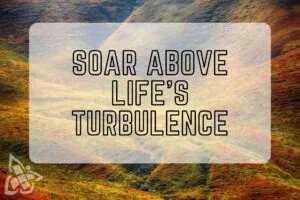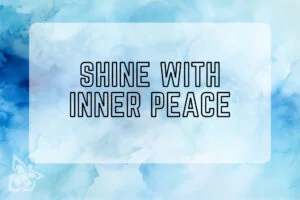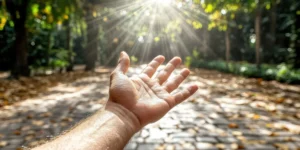What are the key warning signs that indicate a person may be developing a true addiction, as opposed to just problematic behavior? Get help from qualified counsellors.Addiction Knows No Bounds, Awareness Is Our Best Defense
When Addiction Doesn’t Look Like Addiction
Addiction has a thousand faces. It’s the businessman who drinks to sleep, the mother who doubles her painkiller dose just to get through the day, the teenager glued to his phone chasing a dopamine hit. We still picture addiction as a dark alley or a needle in an arm, but in truth, it’s far more ordinary, and far more dangerous, because it hides in plain sight.
The question isn’t just who gets addicted, but how. Every addiction tells a story about pain, escape, and loss of control. Some addictions take years to destroy a life. Others do it in months. Understanding those differences isn’t just about science, it’s about compassion. It’s how we stop treating addiction like a moral failure and start seeing it for what it really is, a symptom of pain that’s looking for relief.
The Spectrum of Addiction
Addiction is not a single condition. It’s a spectrum, from mild dependency to full-blown compulsion. Some people can drink or use occasionally without losing control. Others can’t. For those who cross that invisible line, addiction isn’t a choice, it’s survival gone wrong.
Neuroscience explains it simply. Every time we use a substance or engage in a behaviour that makes us feel good, the brain releases dopamine. Over time, that reward system becomes hijacked. The brain begins to prioritise the substance over everything else, family, work, health, and even self-preservation. The user isn’t chasing pleasure anymore. They’re chasing relief from the emptiness that comes when the drug wears off.
Understanding this spectrum helps families move from judgment to empathy. A person doesn’t wake up one day and decide to ruin their life. Addiction creeps in slowly, disguised as control, until it takes over entirely.
Prescription Drugs, The Quiet Epidemic
One of the most dangerous forms of addiction is the one we justify. Prescription drugs are meant to heal, yet they often become the very thing that harms. Painkillers, tranquilizers, and sleeping pills are legal, socially acceptable, and devastatingly addictive when misused.
In South Africa and across the world, people are becoming dependent on opioids like codeine, benzodiazepines like Xanax, or sedatives that numb rather than heal. It starts innocently enough, a back injury, post-surgery pain, or anxiety that won’t quiet down. But tolerance grows. The pills stop working. The doctor’s prescription runs out. And suddenly, what began as relief becomes reliance.
Unlike street drugs, these addictions often go unnoticed. They come with no stigma, no back alley transactions, just refills, excuses, and quiet desperation. By the time families notice, the person may already be trapped in withdrawal cycles that feel impossible to escape. The legality of the drug doesn’t make it any less dangerous, it just makes it easier to hide.
Street Drugs, The Fast Burn
While prescription addiction moves like erosion, street drug addiction hits like a landslide. Heroin, cocaine, and methamphetamine tear through the body and brain, rewriting a person’s chemistry in weeks.
Heroin offers numbness, cocaine gives false power, and meth fuels a manic, unsustainable high. The come-down is brutal, depression, paranoia, and physical pain so severe that users will do anything to avoid it. Families often watch helplessly as their loved one becomes unrecognisable, stolen not by choice, but by chemical enslavement.
But the real story behind these drugs isn’t rebellion, it’s relief. Many people start using to escape trauma, poverty, or emotional pain. The drug offers what life never did, peace, energy, or control. Once the hook is in, the person’s biology and psychology become enslaved to the next hit.
Treatment for these addictions demands more than detox. It requires unearthing the reasons they started using in the first place, the trauma, the loneliness, the shame, and helping them rebuild life from the ground up.
Alcohol, The Accepted Addiction
Alcohol is society’s favourite drug and its most deadly one. It’s at weddings, funerals, work functions, and Friday nights. We toast with it, mourn with it, and medicate with it. And because it’s legal, we underestimate its power to destroy.
In South Africa, where binge drinking is often treated as a cultural norm, alcoholism silently wrecks homes, careers, and bodies. The person who “just needs a drink to relax” soon becomes the person who can’t function without one.
Alcohol withdrawal can be deadly. The physical dependence it creates means that stopping abruptly can lead to seizures or delirium tremens. But what’s more insidious is how socially reinforced it is. We laugh off hangovers and praise the “life of the party,” even as people spiral into dependency.
There’s a painful truth here, the most dangerous addictions are the ones we celebrate. And until society changes its relationship with alcohol, recovery will remain an uphill battle for millions.
When Addiction Isn’t a Substance
Not every addiction involves a chemical. Some live in our habits. Gambling, pornography, social media, and even work can trigger the same dopamine-driven cycle as drugs. These behavioural addictions often hide under the label of “personality” or “lifestyle.”
A gambling addict doesn’t chase money, they chase the rush of risk. A social media addict isn’t looking for connection, they’re chasing validation. These behaviours alter brain pathways in the same way substances do, creating obsession and withdrawal symptoms when taken away.
Because there’s no physical evidence, no empty bottles, no needles, families often dismiss these addictions as lack of discipline. But make no mistake, behavioural addiction can destroy relationships, finances, and mental health just as thoroughly as heroin or alcohol.
The Common Thread, Pain
No matter the drug or behaviour, every addiction shares a root cause, pain. Addiction is rarely about pleasure, it’s about survival. People use substances or behaviours to escape something unbearable, grief, shame, trauma, loneliness, or stress.
The tragedy is that the very thing used to numb pain ends up multiplying it. Addiction isolates. It replaces connection with compulsion and self-respect with self-loathing. Families watching from the outside often ask, “Why can’t they just stop?” The answer is heartbreaking, because stopping means facing the pain that started it all.
Recovery begins when that pain is addressed, not ignored. Compassion doesn’t excuse addiction, it disarms it. And when families move from blame to understanding, they become part of the healing instead of part of the silence.
Recovery Isn’t One-Size-Fits-All
There’s no universal cure for addiction. Detox gets the body clean, but the mind and spirit take longer. True recovery is layered, it involves medical supervision, therapy, community support, and sometimes medication. For some, twelve-step programs like Alcoholics Anonymous become the backbone of their recovery. For others, cognitive behavioural therapy or trauma-focused counselling provides the insight they need to rebuild.
The most important element is honesty, being brutally honest with oneself, with family, and with therapists. Recovery isn’t about perfection. It’s about progress, relapse, and resilience. Some days it’s a quiet victory just to get out of bed. Other days, it’s the courage to call a sponsor instead of a dealer.
Every person’s recovery is unique. But the foundation is the same, hope, accountability, and community.
Why Understanding the Differences Matters
Recognising the different forms of addiction changes how we respond. The teenager hooked on social media doesn’t need the same intervention as the executive abusing painkillers. A heroin addict requires medical detox, a gambling addict needs psychological therapy.
When we stop lumping every addiction together, we start saving more lives. Each addiction demands a tailored approach, medical, psychological, and social. Understanding the difference means fewer people fall through the cracks because their pain doesn’t “look like” addiction.
At We Do Recover, we see this every day. No matter the substance or behaviour, the first step is always the same, reach out. The second step is believing that recovery is possible, no matter how far gone things seem.
The Real Difference That Matters
In the end, addiction isn’t about drugs, it’s about disconnection. It’s what happens when people lose the ability to cope, connect, or hope. The substance or behaviour is just the symptom.
The real difference between one addiction and another isn’t chemical, it’s personal. It’s how deeply the person feels unseen, unheard, or unloved. And that means recovery isn’t just about quitting, it’s about rebuilding connection, purpose, and belonging. If you or someone you love is struggling, start there. Don’t ask, “What are they using?” Ask, “What are they running from?”
Because that’s where healing begins. And when we finally stop pretending addiction is just about substances, we start saving not only addicts, but families, futures, and lives.
Addiction isn’t one size fits all. But recovery, at its core, always begins the same way, with a hand reaching out and someone brave enough to take it.

If you can’t stop drinking alcohol, then it’s clear that there is a problem at…

12 step programs are the widely accepted approach to treating alcohol and various other…

How People End Up In The Wrong Rehabs When an alcoholic reaches breaking point the…








